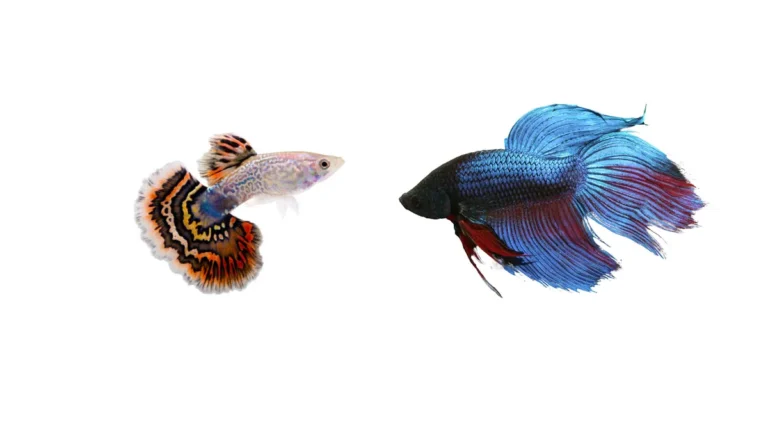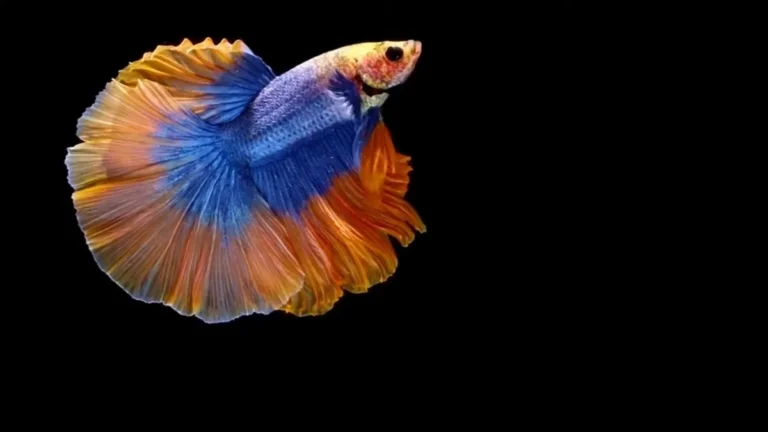Chinese Algae Eater vs. Otocinclus: A Comparison for Algae Control
Hey there, fellow aquarium enthusiasts! Today, we’re diving into the fascinating world of algae control in our fish tanks. Algae growth is a common challenge that we all face, but fear not, because I’ve got two amazing fish species to introduce to you: the Chinese Algae Eater and the Otocinclus. These algae-eating champions are popular choices for keeping our tanks clean and maintaining a healthy aquatic environment.
So, let’s jump right into it and explore the differences and similarities between these two fish in the ultimate battle of algae control!
Chinese Algae Eater vs. Otocinclus: Comparing Algae-Eating Champions
Let’s start by getting to know our contenders a little better. The Chinese Algae Eater, scientifically known as Gyrinocheilus aymonieri, is a striking fish with its elongated body and sucker-like mouth. It usually sports silver or golden coloration, adding a touch of elegance to any tank. On the other hand, we have the Otocinclus Catfish, belonging to the Otocinclus spp.
Which is small and compact with a brownish body adorned with spots. Both fish are highly regarded for their algae-eating prowess, but let’s delve deeper into their habits and behaviors.
| Feature | Chinese Algae Eater | Otocinclus Catfish |
| Size | Larger | Small |
| Body Shape | Elongated | Compact |
| Coloration | Silver or golden | Brownish with spots |
| Algae-Eating Behavior | Constant grazing | Preference for soft algae |
| Compatibility | Can be aggressive | Peaceful |
| Tank Size | Minimum of 30 gallons | Minimum of 10 gallons |
| Temperature Range | 72-78°F (22-26°C) | 72-78°F (22-26°C) |
| pH Range | 6.5-7.5 | 6.5-7.5 |
| Tank Setup | Requires ample hiding spots | Requires ample hiding spots |
| and plants | and plants |
Chinese Algae Eater (Gyrinocheilus aymonieri)
The Chinese Algae Eater is not your average fish. Its unique appearance and constant grazing behavior make it an intriguing addition to any aquarium. When it comes to physical appearance, these algae eaters are larger and have an elongated body compared to their Otocinclus counterparts. Picture a sleek silver or golden fish gliding gracefully through the water. Their sucker-like mouth is designed perfectly for their algae-eating habits.
Speaking of habits, Chinese Algae Eaters are true grazing machines. They have a voracious appetite for algae and can consume various types, making them effective in keeping algae growth under control. I’ve had personal experience with Chinese Algae Eaters in my tanks, and let me tell you, they never disappoint. Watching them diligently scouring every nook and cranny for algae is like having your very own algae-fighting superhero.
However, it’s important to note that Chinese Algae Eaters have a reputation for being somewhat aggressive and territorial, especially as they mature. This behavior can make them unsuitable for certain community tanks, particularly if you have other bottom-dwelling or slow-moving fish. So, keep an eye on their behavior and tank dynamics if you decide to welcome them into your aquatic family.
When it comes to tank requirements, Chinese Algae Eaters appreciate a bit of space to roam. A minimum tank size of 30 gallons should provide ample room for their active nature. In terms of water parameters, they prefer a temperature range between 72-82°F (22-28°C) and a pH range of 6.5-7.5. To create a comfortable home for them, consider adding hiding spots and plants where they can retreat and explore.
Otocinclus Catfish (Otocinclus spp.)
Now let’s turn our attention to the Otocinclus Catfish, a charming and peaceful algae-eating fish that’s sure to win your heart. With their small and compact body shape, these catfish may be tiny, but they play a mighty role in algae control. Picture a school of these adorable brownish fish with delicate spots gracefully gliding through your tank, snacking on algae as they go.
Otocinclus Catfish have a strong preference for soft algae, such as green spot algae and diatoms. Their specialized diet allows them to focus on the most common types of algae found in aquariums, making them a valuable asset in keeping your tank clean and beautiful. I’ve had the pleasure of keeping Otocinclus in my tanks, and they’ve been fantastic allies in my ongoing battle against algae.
One of the most appealing aspects of Otocinclus Catfish is their peaceful nature. They are incredibly compatible with other fish species and rarely cause any trouble. In fact, they’re known for their social behavior, often forming schools and creating a lively and harmonious community tank. So, if you’re looking to maintain a peaceful and algae-free aquarium, the Otocinclus is a fantastic choice.
In terms of tank requirements, Otocinclus Catfish can thrive in smaller tanks due to their size, making them a suitable option for aquarists with limited space. A minimum tank size of 10 gallons should be sufficient, but the more space, the better. Like their Chinese Algae Eater counterparts, they prefer a temperature range between 72-78°F (22-26°C) and a pH range of 6.5-7.5. Creating a well-decorated tank with plenty of hiding spots, plants, and driftwood will mimic their natural habitat and ensure their well-being.
Similarities Between Chinese Algae Eater and Otocinclus
Despite their differences, the Chinese Algae Eater and Otocinclus Catfish share some common traits and characteristics:
Diet:
- Both species are dedicated algae eaters, making them powerful allies in the fight against unwanted algae growth.
- They primarily feed on various types of soft algae, ensuring a clean and pristine environment for your fish.
Tank Requirements:
- Chinese Algae Eaters and Otocinclus Catfish thrive under similar tank conditions, making it easier for aquarists to cater to their needs.
- They prefer a pH range of 6.5-7.5 and a temperature range between 72-78°F (22-26°C).
- Providing ample hiding spots, plants, and driftwood is crucial for their well-being and helps recreate their natural habitats.
Related Post: Siamese Algae Eater vs. Otocinclus: A Comparison for Algae Control
Differences Between Chinese Algae Eater and Otocinclus
Now, let’s highlight the distinctive features and behaviors that set the Chinese Algae Eater and Otocinclus Catfish apart:
Physical Appearance:
- Chinese Algae Eaters are larger and more elongated compared to the small and compact Otocinclus Catfish.
- Chinese Algae Eaters display striking silver or golden coloration, while Otocinclus Catfish have a brownish body adorned with spots.
Algae-Eating Habits:
- Chinese Algae Eaters are known for their constant grazing behavior, devouring various types of algae in their path.
- Otocinclus Catfish have a preference for soft algae, such as green spot algae and diatoms, focusing on the most common algae found in aquariums.
Related Post: Siamese Algae Eater vs. Flying Fox: A Battle of Algae Control
What are the ideal living conditions for Chinese Algae Eater and Otocinclus?
Chinese Algae Eaters and Otocinclus Catfish thrive in similar tank conditions. Here are some key aspects to consider for their well-being:
- Temperature: Maintain a temperature range of 72-78°F (22-26°C).
- pH Level: Aim for a pH range of 6.5-7.5.
- Tank Size: Provide a minimum tank size of 30 gallons for Chinese Algae Eaters and 10 gallons for Otocinclus Catfish, though larger tanks are preferred.
- Tank Setup: Add plenty of hiding spots, plants, and driftwood to create a comfortable and stimulating environment for them.
Are Chinese Algae Eater and Otocinclus compatible with other fish species?
Yes, both Chinese Algae Eaters and Otocinclus Catfish are generally peaceful and can coexist with a wide range of community fish. However, it’s important to consider the specific needs and temperament of the fish species you plan to keep together. Avoid combining Chinese Algae Eaters with slow-moving or bottom-dwelling fish, as they may exhibit aggressive behavior.
How effective are Chinese Algae Eater and Otocinclus in controlling algae growth?
Both Chinese Algae Eaters and Otocinclus Catfish are highly effective in controlling algae growth in aquariums. They are natural algae grazers and will diligently consume soft algae types, keeping your tank clean and visually appealing. However, it’s important to note that no single fish can completely eradicate all types of algae. Regular maintenance, proper lighting, and balanced nutrition are crucial factors in maintaining a healthy and algae-free tank.





